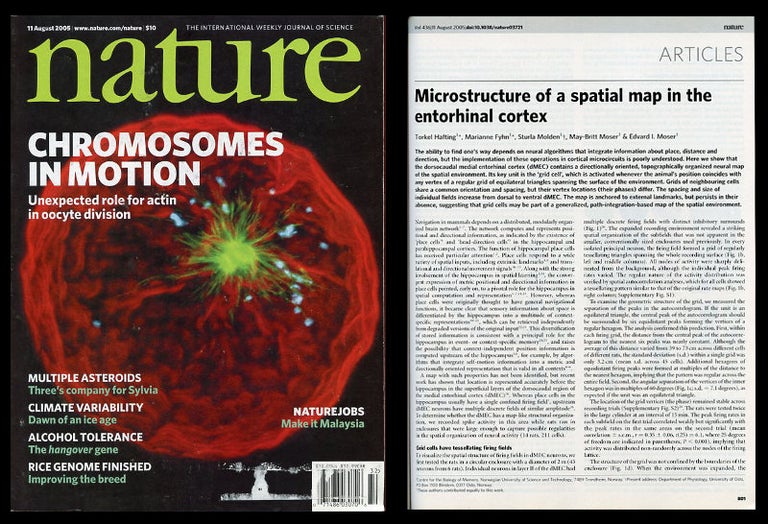Microstructure of a spatial map in the entorhinal cortex in Nature 436, 11 August 2005, ppp. 801-806
London: Macmillan, 2005. 1st Edition. FIRST EDITION IN ORIGINAL WRAPS OF A NOBEL PRIZE WINNING PAPER ANNOUNCING THE DISCOVERY OF THE BRAIN’S ‘INNER GPS’.
The question of how the brain creates “a map of the space surrounding us and how we can navigate our way through a complex environment” (Nobel Prize Web Portal).
“The first clue was unveiled by O'Keefe back in 1971. He discovered the first component of this internal positioning system — a type of nerve cell that resides in the hippocampus. While studying rats, O'Keefe noticed that these cells were always activated when a rat was at a certain place in a room. Other nerve cells were activated when the rat was elsewhere. He concluded that these "place cells" formed a map of the room.
“Fast forward three decades to 2005 and the work of May-Britt and Edvard Moser. [In this paper they] identified another type of nerve cell in the entorhinal cortex region in brains of rats, which they called "grid cells," that generate a coordinate system and allow for precise positioning and pathfinding. Their subsequent work demonstrated how place and grid cells make it possible to determine position and to navigate” (ibid). The 2014 Nobel Prize in Physiology or Medicine was awarded to O’Keefe, May-Britt, and Moser. Item #505
CONDITION & DETAILS: Original wraps. London: Macmillan. 4to. (11 x 8.25 inches; 275 x 206mm). Nature, 436, 11 August 2005. Slight ghosting from the removal of a mailing label. Minor rubbing at the edges. Bright and clean inside and out. Very good condition.
Price: $300.00

